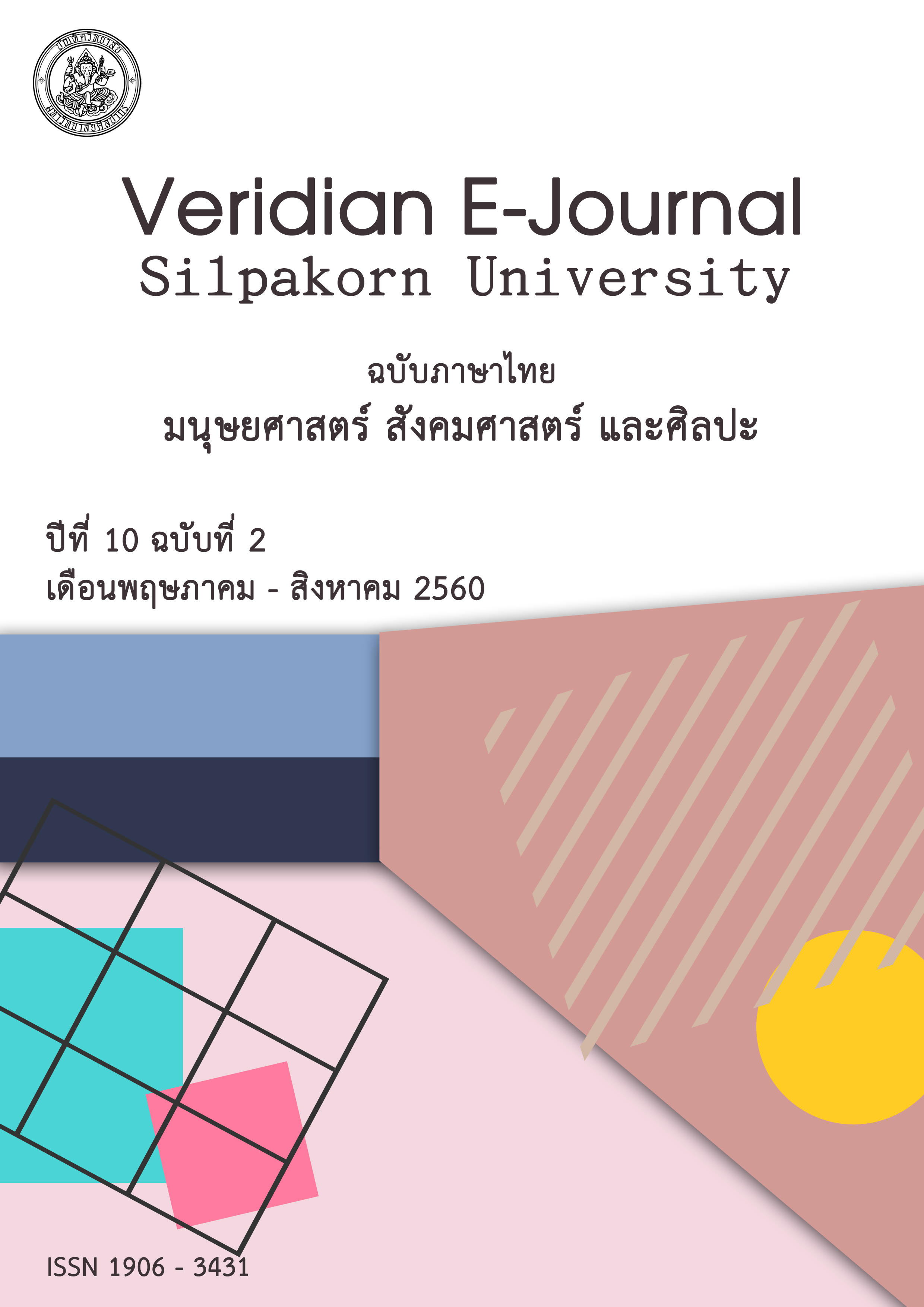ศักยภาพการผลิต การตลาดปลาสวยงามในประชาคมเศรษฐกิจอาเซียน
Main Article Content
Abstract
การวิจัยครั้งนี้มีวัตถุประสงค์เพื่อ 1 ศึกษาถึงความได้เปรียบ-เสียเปรียบทางการแข่งขันหลังการเข้าสู่การเป็นประชาคมเศรษฐกิจอาเซียนของอุตสาหกรรมส่งออกปลาสวยงามในกลุ่มประชาคมเศรษฐกิจอาเซียน รูปแบบงานวิจัยเชิงคุณภาพ เครื่องมือที่ใช้ในการศึกษาคือ แบบสัมภาษณ์ ที่มีลักษณะเป็นทางการ โดยกำหนดประเด็นคำถามในการสัมภาษณ์ ดำเนินการเก็บรวบรวมข้อมูลจากการสัมภาษณ์เชิงลึกผู้ให้ข้อมูลหลักจำนวน 19 คน
ผลการวิจัยสรุปได้ว่า อุตสาหกรรมปลาสวยงามของประเทศสิงคโปร์มีศักยภาพการผลิต การตลาดสูงที่สุด รองลงมา คือ ประเทศมาเลเซีย และประเทศไทย ตามลำดับ สาเหตุที่อุตสาหกรรมปลาสวยงามของประเทศสิงคโปร์มีศักยภาพสูงที่สุด เนื่องจากภาครัฐให้การสนับสนุนการพัฒนาอุตสาหกรรมปลาสวยงาม มีความพร้อมของระบบสาธารณูปโภคและระบบโลจิสติกส์ ส่งผลให้การดำเนินการด้านการขนส่งมีต้นทุนต่ำ และมีรูปแบบการติดต่อซื้อขายที่มีประสิทธิภาพ สะดวก รวดเร็ว และเข้าถึงได้ง่าย รองลงมา คือ ประเทศมาเลเซียมีการใช้เทคโนโลยีในกระบวนการผลิต ทำให้สามารถควบคุมการผลิตให้มีคุณภาพสูง สามารถใช้ภาษาอังกฤษในการสื่อสารทำให้การติดต่อการค้าระหว่างประเทศมีประสิทธิภาพมากขึ้น ในขณะที่อุตสาหกรรมปลาสวยงามของประเทศไทยมีศักยภาพน้อยที่สุด เนื่องจากขั้นตอนพิธีการศุลกากร และการขอใบรับรองจากหน่วยงานภาครัฐเพื่อการส่งออกมีขั้นตอนที่ยุ่งยากซับซ้อน ระบบการขนส่งและโลจิสติกส์ของประเทศยังไม่มีประสิทธิภาพ และยังขาดทักษะในการสื่อสารด้านภาษาอังกฤษ ดังนั้นประเทศไทยจำเป็นต้องเร่งพัฒนาประสิทธิภาพการผลิต การตลาดปลาสวยงามให้มีคุณภาพได้มาตรฐานสากลตามที่ตลาดต้องการ และการบริหารจัดการต้นทุนด้านการขนส่งและโลจิสติกส์มีประสิทธิภาพ เพื่อเพิ่มขีดความสามารถในการแข่งขันกับประเทศสิงคโปร์และประเทศมาเลเซียได้
This research aimed to study advantages and disadvantages in competition of ornamental fish industry after entering into ASEAN Economic Community. Qualitative research was done by using structured interview. Data were collected from 19 key informants using in-depth interview.
The result showed that ornamental fish industry of Singapore had a potential to produce the highest marketing, secondly was Malaysia and Thailand, respectively. The reasons that made Singapore have the highest potential were the government’s support on ornamental fish industry and the availability of public utilities and logistics systems. These resulted in low transportation operation and a trading model which was effective, convenient, fast, and accessible. Meanwhile, Malaysia used technology in the manufacturing process, which could control the product to high quality. In addition, they could use English to communicate, so it made their international trade more effective. However, in Thailand, the potential of ornamental fish industry became the least due to the customs clearance procedure and the complicated procedure to obtain a government certificate for export. Moreover, the country’s logistics and logistics systems were ineffective and there was also a lack of communication skills in English. As a result, Thailand needs to accelerate the development of production efficiency and ornamental fish marketing to meet the quality of international standards as required by the market. Furthermore, the country needs to develop management of transportation costs and logistics effectively in order to enhance competitiveness with Singapore and Malaysia.
